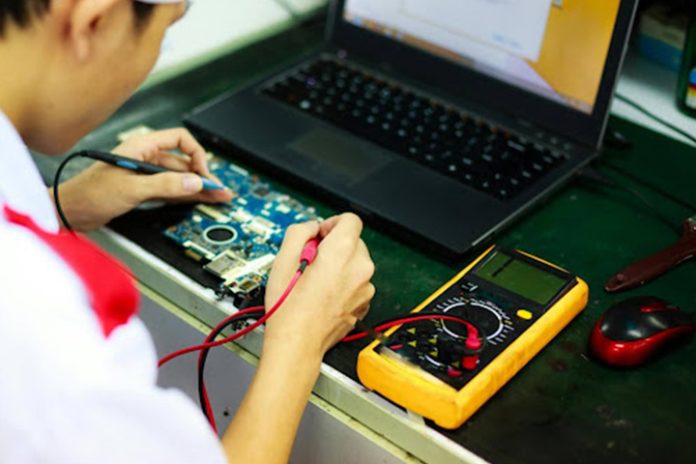As we stand on the brink of technological advancements, the realm of electronics design and testing is not just evolving; it is undergoing a revolution. The future beckons with promises of innovation powered by smarter algorithms, advanced materials, and a new understanding of what electronics can do for humanity. This piece explores the upcoming trends and transformations that are set to redefine the landscape of electronics design and testing.
Seamless Integration of AI and Machine Learning
The infusion of Artificial Intelligence (AI) and Machine Learning (ML) into electronic design is no longer a futuristic dream but a palpable reality. These technologies are making electronics more intuitive and self-sufficient. An intelligent chipset can now predict its operational failures, optimize performance in real-time, and aid in designing complex circuitry with a precision unattainable by human engineers alone.
Emerging Role of Nanotechnology
Nanotechnology is beginning to have a profound effect on electronics design and testing, offering the ability to create smaller, faster, and more efficient devices than ever before. By manipulating materials at the atomic or molecular level, engineers are able to achieve unprecedented levels of miniaturization and performance, paving the way for the next generation of electronic devices.
In the realm of electronics testing, choosing the right tools is paramount for accurate results. An oscilloscope probe is a critical component in capturing data accurately, and understanding how to select the correct probe is essential. Different types of probes offer various benefits, and selecting the right one can greatly enhance the quality and reliability of test measurements.
Sustainability at the Core
As the world becomes increasingly aware of environmental issues, sustainability has become a crucial factor in electronics design and testing. This includes the use of recyclable materials, minimizing waste, and designing for longevity. The industry is moving towards a model where the environmental impact is considered at every stage of the design and testing process.
The Role of Quantum Computing
Quantum computing represents a significant leap forward in computational power. Its potential impact on electronics design is profound, allowing for the simulation and testing of complex circuits and systems in a fraction of the time taken by traditional methods. As quantum computing becomes more accessible, its influence on the field of electronics design and testing is set to grow exponentially.
The Rise of Flexible and Wearable Electronics
Flexibility is the new frontier in electronics. Imagine smartphones that fold, wearable gadgets that wrap around your wrist, or even electronics that can be seamlessly sewn into fabrics. This shift towards flexible and wearable electronics demands innovative design methodologies and testing frameworks to ensure durability, functionality, and user comfort.
Customization and Personalization
As electronics become increasingly integrated into daily life, there is a growing demand for devices that are not only functional but also personalized. From smartphones and wearables to home automation systems, the ability to customize technology to individual preferences is becoming a key differentiator. This trend is driving the need for more adaptable design and testing methodologies that can accommodate a wider variety of use cases and user experiences.
Enhanced Connectivity With 6G
While the world is still exploring the possibilities with 5G, the electronics sector is already gearing up for 6G. This next-generation network promises to further enhance the connectivity of devices, reduce latency, and enable new functionalities like holographic communications. Electronics designers and testers are thus faced with the challenge of making devices 6G-ready, anticipating the needs and opportunities this advancement will bring.
Augmented Reality (AR) and Electronics
Augmented Reality (AR) technology is set to dramatically change the landscape of electronic design and testing by enabling more interactive and immersive experiences. As AR devices become more mainstream, electronics designers are tasked with incorporating AR capabilities into a range of products, from smart glasses to gaming systems, pushing the boundaries of what is possible in electronic design and user interaction.
Revolutionary Materials: Beyond Silicon
The quest for more efficient, faster, and smaller electronics has led to the exploration of materials beyond traditional silicon. Graphene, with its remarkable electrical, thermal, and mechanical properties, stands out as a game-changer. Its implementation in electronics design can lead to devices that are not only more powerful but also more energy-efficient and environmentally friendly.
Conclusion
The future of electronics design and testing is rife with challenges but even more so with opportunities. From the adoption of AI and ML to the exploration of new materials and the integration of sustainability principles, the field is set to undergo profound changes. These advancements not only promise to enhance the performance and functionality of electronic devices but also to revolutionize how we interact with technology on a daily basis. As we look ahead, one thing is clear: the future of electronics is not just about the next big gadget; it’s about creating technologies that enhance our lives while being mindful of our planet. The journey ahead is indeed exciting!
Also Read: Top Tips For Selling Electronics Online

